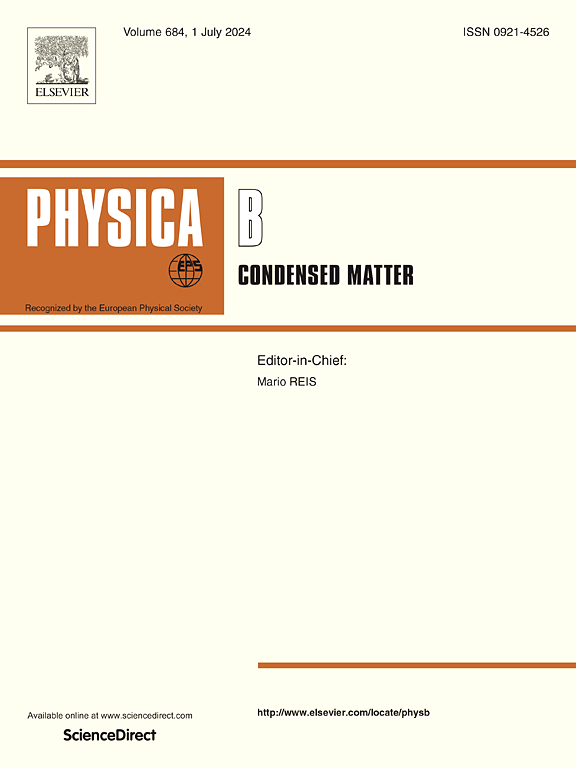Orbital magnetic susceptibility of multifold fermions
IF 2.8
3区 物理与天体物理
Q2 PHYSICS, CONDENSED MATTER
引用次数: 0
Abstract
Topological semimetals are intensively studied in recent years. Besides the well known Weyl and Dirac semimetals, some materials possess nodes with linear crossing of multiple bands. Low energy excitations around these nodes are called multifold fermions and can be described by Hamiltonian with pseudospin greater than 1/2. In the present work we investigate the contribution of these states into orbital magnetic susceptibility . We have found that, similarly to Weyl semimetals, the dependence of susceptibility on chemical potential shows an extremum when is close to the band crossing energy. In the case of half-integer pseudospin, this extremum is a minimum and the susceptibility is negative (diamagnetic). While in the case of integer pseudospin, the susceptibility is large and positive (paramagnetic) due to the contribution of dispersionless band, corresponding to zero pseudospin projection. This leads also to nonmonotonic temperature dependence of . As an example, we considered the case of cobalt monosilicide, where the states near the point correspond to pseudospin 1 without spin-orbital interaction, and to a combination of Weyl node and pseudospin-3/2 states taking into account spin-orbit coupling.
求助全文
约1分钟内获得全文
求助全文
来源期刊

Physica B-condensed Matter
物理-物理:凝聚态物理
CiteScore
4.90
自引率
7.10%
发文量
703
审稿时长
44 days
期刊介绍:
Physica B: Condensed Matter comprises all condensed matter and material physics that involve theoretical, computational and experimental work.
Papers should contain further developments and a proper discussion on the physics of experimental or theoretical results in one of the following areas:
-Magnetism
-Materials physics
-Nanostructures and nanomaterials
-Optics and optical materials
-Quantum materials
-Semiconductors
-Strongly correlated systems
-Superconductivity
-Surfaces and interfaces
 求助内容:
求助内容: 应助结果提醒方式:
应助结果提醒方式:


